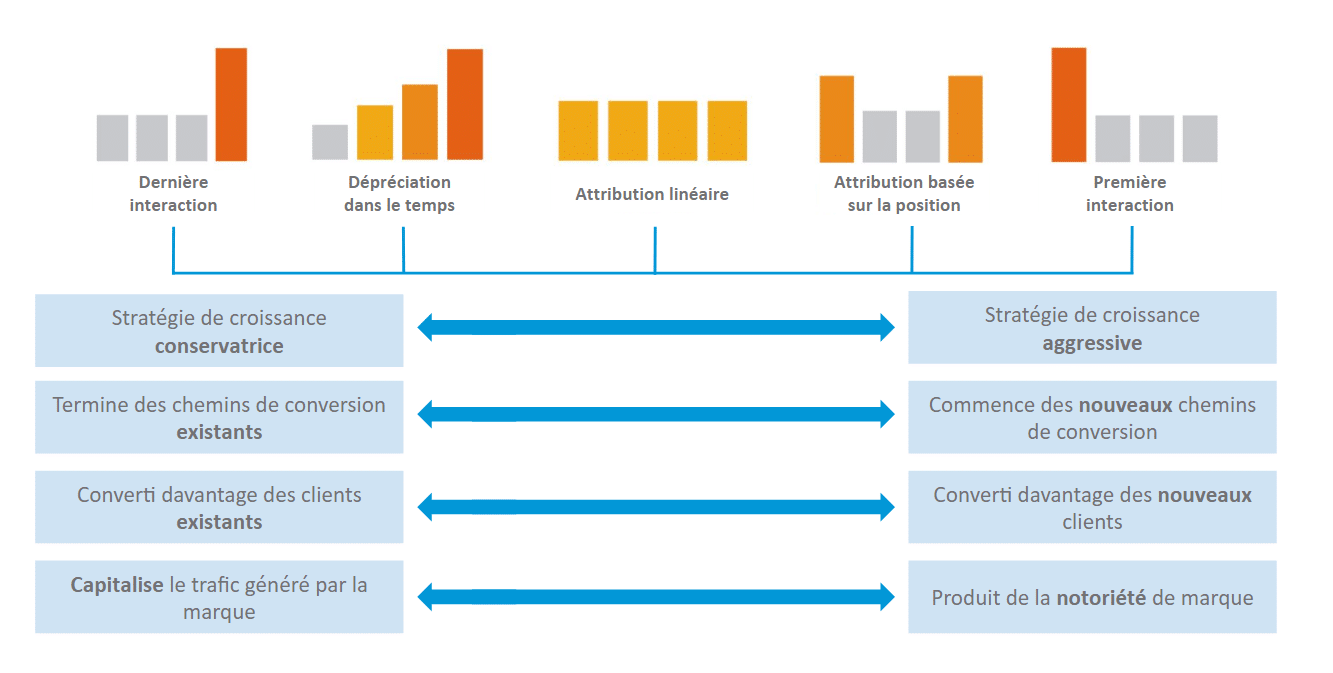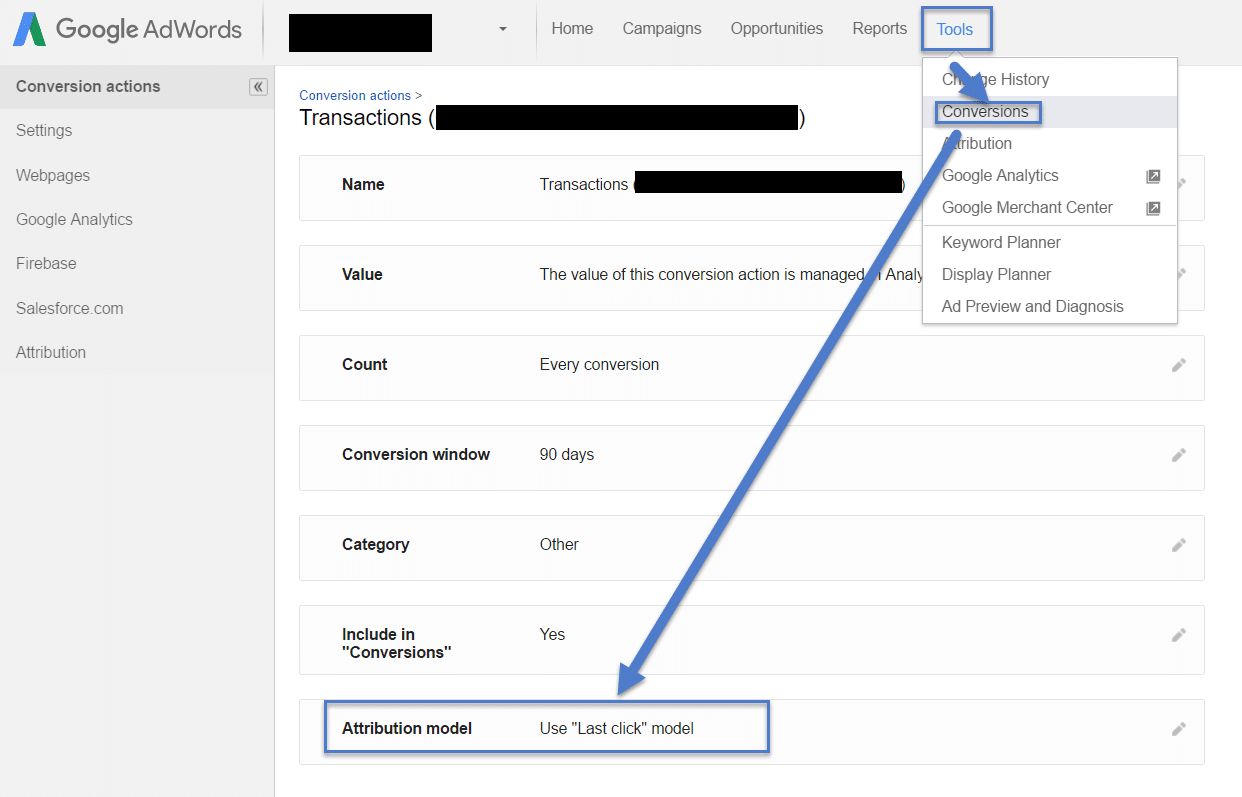Media Practice & Operations Director
Last-Click is Dead, Long Live Multi-Touch Attribution!
Media Practice & Operations Director
“THERE IS NO SUCH THING AS A PERFECT MODEL (IT DOESN'T EXIST), BUT YOU CAN BE LESS WRONG. »
Attribution is a topic I've been obsessed with since working in digital media, so I'm glad it's becoming one of the hottest topics in 2017.
I had the chance to attend the largest gathering of SEM specialists in the world, HeroConf 2017 in Los Angeles, and the subject of attribution was omnipresent throughout most of the sessions.
Just days after the event, Google spoke out to its partners on the use of the "Last-Click " model , insisting that this type of model would quickly become obsolete. Why change the default template used for years overnight? Is “Last-Click In-Platform” optimization a thing of the past?
If you're unfamiliar with attribution models, I recommend this great resource to get you started.
NOW LET'S GET DOWN TO BUSINESS
Most of the digital media industry in 2017 still uses the default model of “Last Non-Direct”. When you use the standard Google Analytics reports (Audience, Acquisition Behavior and Conversions) you are looking at “Last Non-Direct” based reports.

This model is still quite viable if you want to get an overall understanding of your performance. However, if you purely rely on this report to judge the performance of your channels and tactics, you may have made decisions that will harm your entire campaigns: for example, you might have cut a group of ads because it did not perform in "last click", without knowing that it is a real first point of interaction with your brand for several users. Treasures are often hidden in your data! (Article in English only.)
THE “LAST-CLICK” ADVANTAGE
It's not without reason that AdWords' default attribution model has been “Last Click” for years. This model is very faithful to the vision of Avinash Kaushik who advocates always saturating the bottom of the conversion funnel before investing at the top of the funnel. This model therefore makes it possible to optimize on the keywords and tactics that make it possible to finalize the sale.
The question to ask therefore becomes: do I only want to optimize on what finalizes the sale or visualize on all the points of contact that can lead to a sale?
THE ADVANTAGE OF A "MULTI-TOUCH" MODEL
Three models that allow attribution across multiple touchpoints that generate a sale or lead are currently available in AdWords and Google Analytics. The "Multi-Touch" models have the advantage of considering all the contact points of the "Buyers' Journey " .
I invite you to discover the three attribution models in question , namely Linear Attribution, Time Depreciation and Position-Based Attribution.
THE ADVANTAGE OF A “FIRST-CLICK” MODEL
This model is particularly useful when trying to reach a new "In-Market " clientele.
When you think about it, the majority of investments on AdWords are made on generic campaigns that serve to make the brand known to users who are actively looking for a product or service. Take for example a Generic X campaign that aims to raise awareness of the brand. To do this, we therefore want to exclude users who have already visited the site to target only new users in order to maximize investment. In this case, it is very relevant to optimize at the "First-Click", because it is the primary objective of the campaign: to fill the top of the funnel!
The user in question can therefore do a search, click on an ad, visit the site, compare with competitors, and finally proceed with the conversion. These “touchpoints” are just a few examples of a typical user journey.
Going back to our example, if we use the basic “Last-Click” models, no conversion value will be attributed to the generic campaign. On the other hand, if we approach this example with the “First-Click” model, we could optimize the campaign in order to generate more first interactions and thus increase the overall sales for these products or services.
Here is an example of a user journey where there are a lot more than 3-4 interactions before a conversion.

Before embarking on a media campaign and setting objectives by channel, you must therefore choose your attribution model carefully.
To help you, here is an infographic of the different attribution models according to their purpose.

Unfortunately, there is still no miracle recipe for choosing the best attribution model. In order to choose the most optimal model for you, I advise you to compare your different tactics/campaigns across different models. This comparison can be done in both Google AdWords and Google Analytics.

Another important thing when we use attribution models is to choose the right period of analysis. The period of analysis represents the number of previous days that the model will look in order to find the first interaction. This is very important depending on your domain. Some products or services such as buying a t-shirt can only take a few minutes, while buying a car can take a few weeks or even a few months.
Once you've analyzed your data and decided on a particular model, you can change the conversion attribution model directly from AdWords.

During the conference, we learned that Google has launched a new attribution model “ Data-driven attribution models ” which, with “ machine learning ”, dynamically assigns the right conversion weight to each player. The user of this new model, however, has quite important requirements, so that the algorithm has enough information to work, ie 15,000 clicks and 600 conversions in the last 30 days.
In short, there is no perfect model, which means it’s important to look at your attribution model in relation to your marketing objective. Looking at your data from a different perspective might help you see that your campaigns are more profitable than you had imagined!

-1.png)
-1.png)
-2.png)





